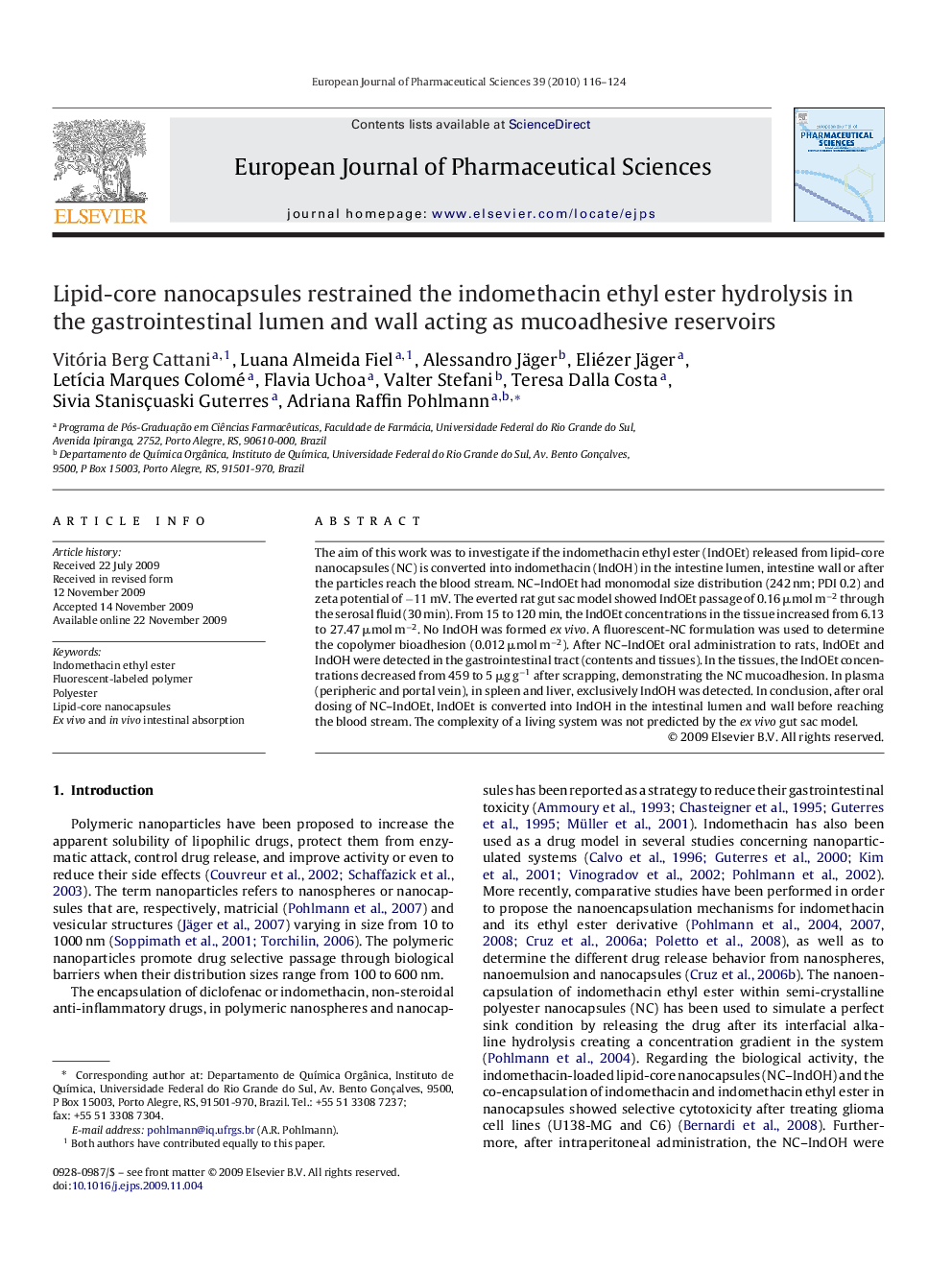| کد مقاله | کد نشریه | سال انتشار | مقاله انگلیسی | نسخه تمام متن |
|---|---|---|---|---|
| 2481484 | 1556250 | 2010 | 9 صفحه PDF | دانلود رایگان |

The aim of this work was to investigate if the indomethacin ethyl ester (IndOEt) released from lipid-core nanocapsules (NC) is converted into indomethacin (IndOH) in the intestine lumen, intestine wall or after the particles reach the blood stream. NC–IndOEt had monomodal size distribution (242 nm; PDI 0.2) and zeta potential of −11 mV. The everted rat gut sac model showed IndOEt passage of 0.16 μmol m−2 through the serosal fluid (30 min). From 15 to 120 min, the IndOEt concentrations in the tissue increased from 6.13 to 27.47 μmol m−2. No IndOH was formed ex vivo. A fluorescent-NC formulation was used to determine the copolymer bioadhesion (0.012 μmol m−2). After NC–IndOEt oral administration to rats, IndOEt and IndOH were detected in the gastrointestinal tract (contents and tissues). In the tissues, the IndOEt concentrations decreased from 459 to 5 μg g−1 after scrapping, demonstrating the NC mucoadhesion. In plasma (peripheric and portal vein), in spleen and liver, exclusively IndOH was detected. In conclusion, after oral dosing of NC–IndOEt, IndOEt is converted into IndOH in the intestinal lumen and wall before reaching the blood stream. The complexity of a living system was not predicted by the ex vivo gut sac model.
Journal: European Journal of Pharmaceutical Sciences - Volume 39, Issues 1–3, 31 January 2010, Pages 116–124